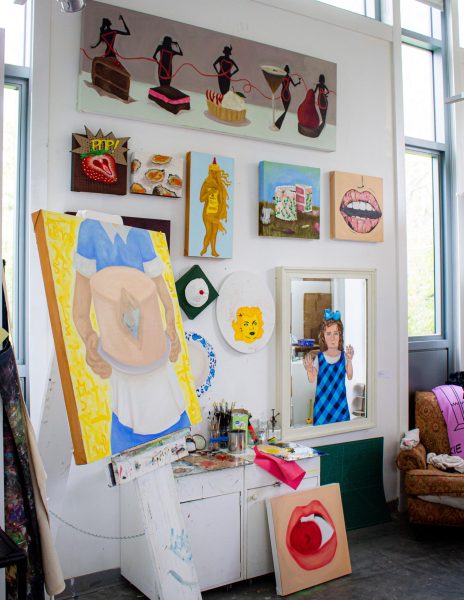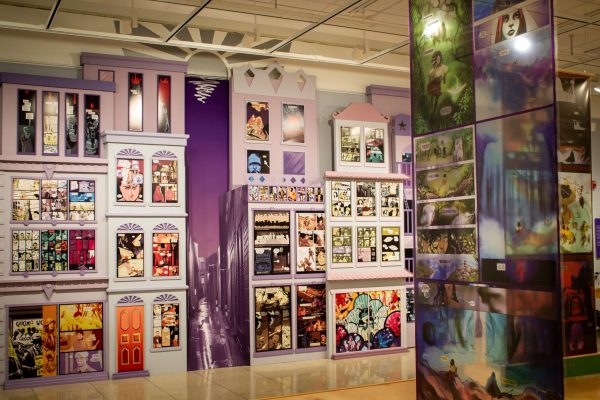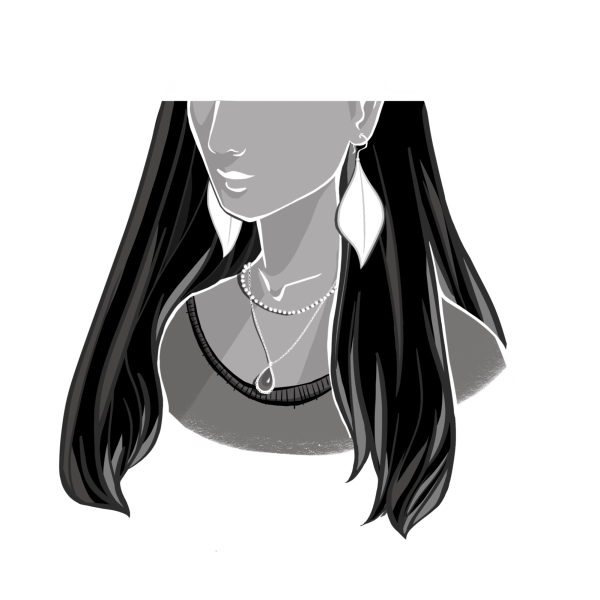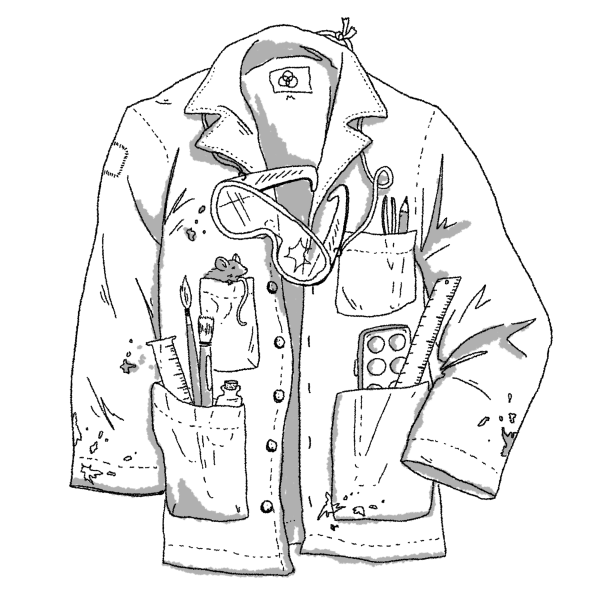Sheehan Hosts Senior Thesis Art Exhibition
April 27, 2017
A diverse and striking spread of artwork now inhabits the Sheehan Gallery and the Fouts Center for Visual Arts exhibition space. These pieces are the works of class of 2017 art majors, who went through an extensive artistic process that culminated in the 2017 Senior Thesis Art Exhibition. The show opened on April 21 with a lecture by Portland Art Museum Curator Sara Krajewski and will continue to be open through May 21. There will be a reception for family and friends in both exhibition spaces on May 20.
The pieces illustrate the creativity, engagement and wide modes of expression that art students at Whitman possess. Each piece features the unique perspective of the student. Watercolor paintings, sculptures and photographs address a variety of topics such as loss, changing perceptions and the past.
Caleb Moosman’s piece, “Reflections,” combines elements of a performative piece, installation piece and drawing. This work includes two charcoal-covered beds with footprints in between, meant to express his confusion, meditation and exploration regarding institutionalized religion and the reconstruction of identity.
“You can say prayers in a bed, you can be intimate with a lover in a bed, you can dream in a bed, you make yourself so physically vulnerable when you sleep and it’s a place of rest and recovery,” Moosman said. “The bed is such a heavy symbol that to use it in a piece of art, especially with all the ideas about the reconsidering of identity and the rebuilding of it, makes the bed a place of becoming.”
Using a different approach, Maia Watkins created what she calls a “consumable, continuous trauma narrative” through her piece titled, “wheeling winging wending mending.” Watkins made caramels and wrapped them in mulberry paper upon which, pieces of a trauma narrative are written. People are invited to take a caramel upon visiting her piece and, at the same time, take and consume a piece of her narrative.
“I was thinking about alternative trauma narratives and how a lot of times … people who have stories that are difficult to tell have to work a lot harder in order to have their voices be heard,” Watkins said.
While making distinct and separate pieces, Moosman, Watkins and their 16 fellow senior art majors remain a part of a community of artists who are attuned not only to their own artistic expression, but also to the way that expression might engage others. Exhibitions and Collections Manager Kynde Kiefel, who worked with the students throughout the installation process, noted this awareness.
“I feel like there’s a lot of big, generous ideas and really worldly, interesting ideas, and I just appreciate the depth and width that this group is thinking in,” Kiefel said.
Moosman expanded on this and how each piece might act as a catalyst for more discussions.
“Somehow, there’s still a way in which all our works are communicating with each other,” Moosman said. “I would almost want to say it’s about a struggling self, like struggling to understand yourself in light of bigger institutional things … It’s a lot of the individual self trying to reach out to a community.”
The consciousness and investment of each artist with their piece is evident in the displayed works. Watkins expressed her hopes regarding her piece.
“Something that I hope in general is that by telling my story, that [it] affects other people and hopefully, as a product of empathy, that will make trauma more real,” Watkins said. “More than anything, I just want to make visible a more nuanced narrative of trauma than people are used to hearing or seeing.”
Both Watkins and Moosman acknowledged that much is left to the viewer to interpret. The artists frame their ideas, but leave the viewer to, in turn, bring their own ideas. The interaction between viewer, art and artist is an active and experiential relationship.
“Ultimately, art is about trying to convey–dig at–stuff we can’t really get to in words,” Moosman said. “It’s kind of that gut reaction of standing in front of something, and you don’t have to like it, it doesn’t have to be beautiful, but it is definitely doing something.”
Indeed, this year’s senior art majors have created works that can engage an array of audiences. The show gives the students a well-deserved opportunity to display the outcome of their hard work and artistry at Whitman.










